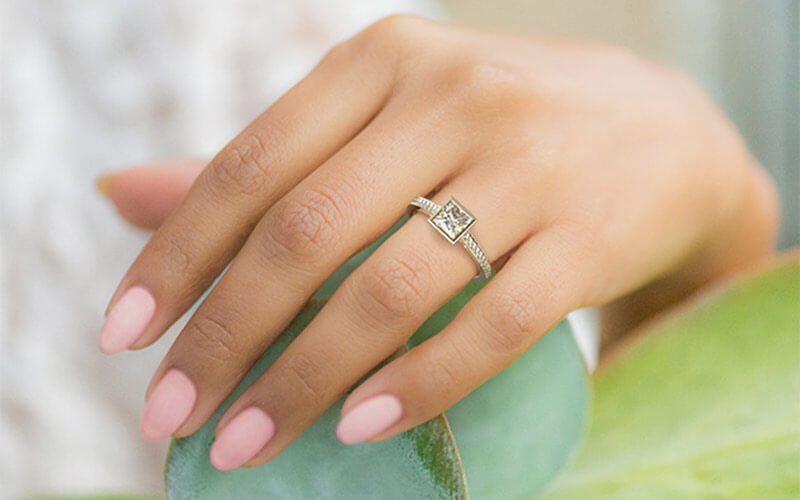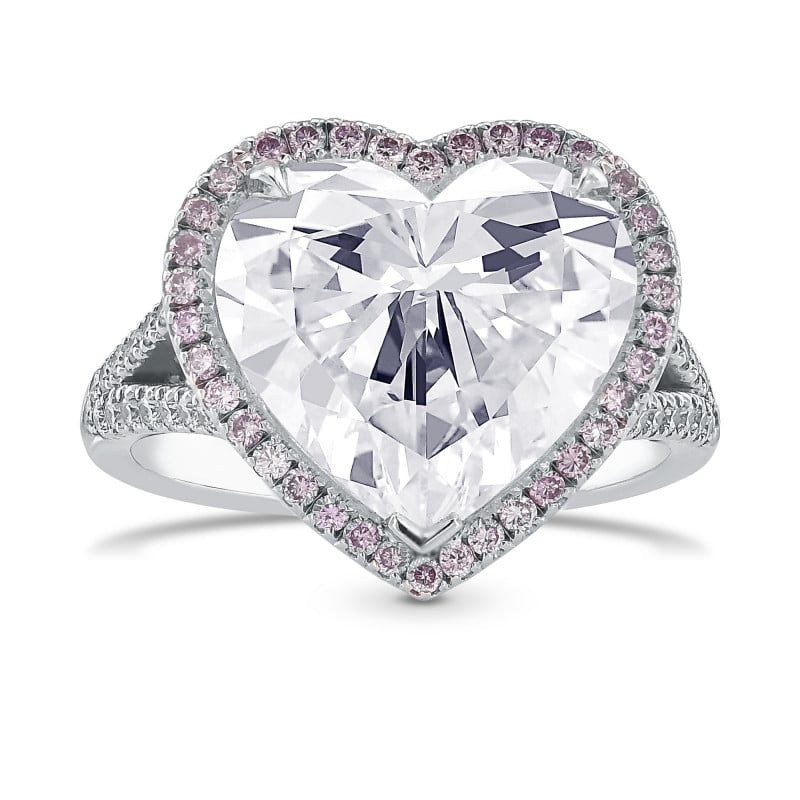How to Buy a Diamond Ring (For Beginners)
Alright, let’s dive into how to buy a diamond ring for beginners. Trust me, it’s not as scary as it seems.
First things first: buying a diamond ring doesn’t have to be a nightmare.
I’ve been there, done that, and I’m here to guide you through it.
Let’s break it down, no fancy jargon, just straight talk.
The 4 Cs: Your New Best Friends
- Cut
- Clarity
- Color
- Carat
These aren’t just random Cs. They’re your ticket to diamond-buying confidence.
Cut: The Sparkle Factor
Think of cut as the diamond’s ability to dazzle.
It’s not about shape, it’s about how light bounces around inside.
A well-cut diamond? It’ll blind you with its brilliance.
A poor cut? Might as well be a fancy paperweight.
Pro tip: Go for the best cut you can afford. It’s the secret sauce of a stunning ring.
The Nitty-Gritty of Cut Grades
Excellent: Top-tier sparkle. If you can swing it, this is the holy grail.
Very Good: Still a stunner, with minor compromises. Often the sweet spot for value.
Good: Decent sparkle, but you might notice a difference next to higher grades.
Fair/Poor: Avoid these unless you’re on a shoestring budget. The lack of sparkle will be obvious.
Clarity: Flaws, What Flaws?
Diamonds have tiny imperfections. Shocking, I know.
But here’s the kicker: most are invisible to the naked eye.
Don’t stress about perfection. Aim for “eye-clean” and save some cash.
Clarity Scale Simplified
FL (Flawless): Rarer than hen’s teeth. And priced accordingly.
VVS1-VVS2 (Very, Very Slightly Included): Tiny flaws even a pro might miss.
VS1-VS2 (Very Slightly Included): Small flaws a trained eye can spot. Still looks flawless to most.
SI1-SI2 (Slightly Included): Visible flaws under 10x magnification. Often eye-clean and great value.
I1-I3 (Included): Visible flaws to the naked eye. Proceed with caution.
My advice? VS2 or SI1 often hit the sweet spot between quality and value.
Color: Less is More
With diamonds, less color means more value.
The scale goes from D (colorless) to Z (light yellow or brown).
My advice? Stick to the G-J range. You’ll get a white-looking diamond without breaking the bank.
Color Grade Breakdown
D-F: Colorless. Pricey, but if you’ve got the cash, why not?
G-J: Near colorless. Most popular range. Looks white to the untrained eye.
K-M: Faint color. Can look slightly warm, especially in larger diamonds.
N-Z: Very Light to Light color. Noticeable tint, but some folks dig the warmth.
Remember: Setting color matters. Yellow gold can make a lower color grade look whiter.
Carat: Size Isn’t Everything
Bigger isn’t always better, especially if you’re on a budget.
A smaller, high-quality diamond can outshine a larger, mediocre one any day.
Remember: carat is about weight, not size. Two 1-carat diamonds can look different sizes.
Carat Weight Hacks
- Go for slightly under whole numbers: 0.9ct instead of 1ct can save you a bundle.
- Consider a halo setting: Smaller center stone surrounded by tiny diamonds. Looks bigger, costs less.
- Elongated shapes like oval or pear can appear larger than round diamonds of the same carat weight.
Budget Breakdown: Where to Splurge and Where to Save
- Splurge on cut. It’s the key to that eye-catching sparkle.
- Save on clarity. Slightly included (SI) diamonds can look flawless to the naked eye.
- Be flexible on color. G-J diamonds look white but cost less than D-F.
- Carat? Go just under whole numbers (like 0.9 instead of 1) for big savings.
Shopping Smart: Online vs In-Store
Online:
- Wider selection
- Often cheaper
- Easy comparison
In-store:
- See and feel the ring
- Immediate gratification
- Personal service
My take? Start online to educate yourself, finish in-store to seal the deal.
Online Shopping Tips
- Use virtual try-on tools. Many sites let you see how the ring looks on a hand.
- Check the return policy. 30 days is standard, but longer is better.
- Read reviews. Both for the diamond and the retailer.
- Look for HD videos of the diamond. It’s the next best thing to seeing it in person.
- Don’t rush. Take your time comparing options.
In-Store Shopping Strategies
- Go on a weekday. You’ll get more attention from staff.
- Bring inspiration pics. Show them what you like.
- Ask to see the diamond under different lights. Office lighting can be misleading.
- Don’t be pressured. It’s okay to walk away and think about it.
- Negotiate. Yes, even on diamonds. You might be surprised.
Red Flags: What to Watch Out For
- Pushy salespeople
- Too-good-to-be-true prices
- Lack of certification
- Reluctance to show you the diamond under magnification
Trust your gut. If it feels off, walk away.
Alternative Stones: Thinking Outside the Diamond Box
Not everyone’s cup of tea is a diamond. Here are some alternatives:
- Moissanite: Nearly as hard as diamond, more sparkly, and way cheaper.
- Sapphire: Comes in every color, not just blue. Good durability.
- Morganite: Soft pink color, trendy, and affordable.
- Lab-grown diamonds: Chemically identical to natural diamonds, but at a fraction of the cost.
- Vintage rings: Unique designs, often more affordable, and eco-friendly.
The Proposal Plan: Beyond the Ring
Got the ring? Great. Now for the fun part:
- Scope out locations. Meaningful beats flashy every time.
- Have a backup plan. Outdoor proposals are romantic, but weather is unpredictable.
- Tell (some) people. A photographer or a few friends can help set the scene.
- Practice your speech. Winging it sounds cool, until you’re knee-deep in nerves.
- Have a post-proposal plan. Dinner reservations? Champagne? Think ahead.
Caring for Your New Bling
- Insure it. Seriously. Do this before you even propose.
- Clean it regularly. Dish soap, warm water, and a soft toothbrush work wonders.
- Take it off for rough activities. Gardening, sports, heavy lifting – give the ring a break.
- Get it checked by a jeweler annually. They’ll tighten any loose stones.
- Store it safely. A soft cloth bag or padded box when you’re not wearing it.
FAQs: The Stuff You’re Too Embarrassed to Ask
Q: How much should I spend? A: Forget the “three months’ salary” rule. Buy what you can afford without going into debt.
Q: Do I need a GIA certificate? A: Yes, if you want peace of mind. It’s the gold standard in diamond grading.
Q: Lab-grown or natural? A: Lab-grown diamonds are chemically identical and often cheaper. It’s a personal choice.
Q: What’s the best metal for the band? A: Platinum is durable but pricey. White gold is popular and more affordable.
Q: Should I buy online or in-store? A: Start online to educate yourself, but try to see the ring in person before buying if possible.
Q: How do I figure out her ring size without spoiling the surprise? A: Borrow one of her rings and trace the inner circle on paper. Or ask her friends for help.
Q: Is it okay to propose with a placeholder ring? A: Absolutely. Some couples prefer to choose the forever ring together.
Real Talk: Common Mistakes to Avoid
- Blowing your entire budget on the diamond. Remember, you need a setting too.
- Ignoring the wedding band. Make sure your engagement ring will pair well with a band.
- Choosing a ring based solely on trends. Classic styles tend to age better.
- Forgetting about lifestyle. A huge rock might not be practical for someone with an active job.
- Not reading the fine print. Understand the warranty and return policy before you buy.
The Bottom Line
Buying a diamond ring doesn’t have to be rocket science.
Focus on what matters: finding a ring that’ll make your partner’s heart skip a beat.
Remember, it’s not about impressing others. It’s about celebrating your love.
And trust me, with these tips, you’re already ahead of the game in how to buy a diamond ring.
Now go out there and find that perfect sparkler!
Final Thoughts: It’s More Than Just a Ring
At the end of the day, remember what this ring represents.
It’s not about the size of the diamond or the price tag.
It’s about the promise you’re making, the life you’re choosing to build together.
So whether you end up with a massive rock or a simple band, what matters most is the love behind it.
And that, my friend, is priceless.
Now you’re armed with everything you need to know about how to buy a diamond ring. Go forth and conquer!



